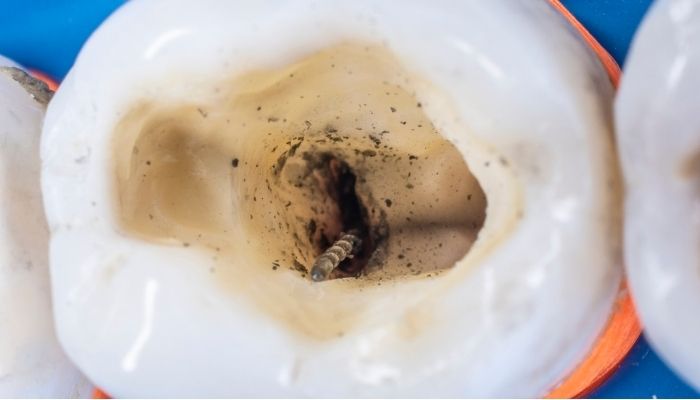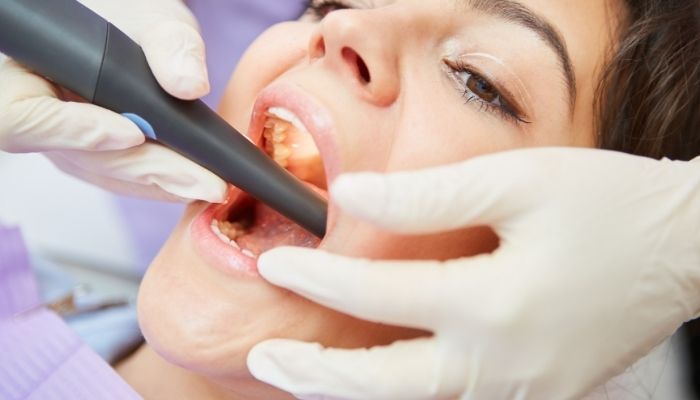Sonalika has just started her career with an MNC in Chennai. Sonalika is an ardent lover of sweets, chocolates, candies, etc. Sonalika has experienced pain and sensitivity in some of her teeth over the past few days. Though she tried over-the-counter painkillers, the pain is not suppressed. So, she consulted a dentist who told her she needs a teeth root canal treatment that will lessen the pain and save the remaining tooth.
Root canal treatment is a therapy that is used to repair and save your tooth that is severely decayed or infected. Root canal therapy is recommended when the pulp tissue (contains nerves and blood vessels in the tooth) gets infected or damaged. A root canal therapy is performed under the supervision of a doctor. After removing the pulp, the doctor cleanses the tooth, and then it is sealed.
Is a Root Canal Painful?
Many people think that root canal pain is unbearable and thus, they avoid this kind of treatment. But the treatment is performed by a deft and professional dental surgeon and thus, it is a painless treatment. The pain usually comes from the underlying root canal infection and not from the treatment. The treatment doesn’t give you pain; rather, it improves the pain.Your dental surgeon will assuage the pain of the procedure by numbing the tooth and its nearby area with local anesthesia. After the treatment, you may feel some tenderness. This is temporary and can be managed by over-the-counter (OTC) pain reliever medications. Sometimes, you may need some prescribed drugs, such as codeine. Your doctor may also recommend an antibiotic to treat or prevent infection.
When pulp is infected or decayed, it breaks down. Bacteria enter the pulp and multiply within the pulp chamber. The bacteria and other dying pulp leftovers may lead to an infection or abscessed tooth. An abscess is a pus-filled pocket that you will notice at the end of a tooth’s root.
Along with an abscess, an infection in the root canal of a tooth may also be responsible for the following:
- Swelling that will gradually spread to other areas of the face, neck, or head
- Loss of bone around the tip of the root
- A hole may appear on the side of the tooth, with drainage into the gums or through the cheek into the skin
Why is a Root Canal treatment required?
Let’s take a look at some of the reasons why a root canal is mandatory for your condition:- Severe toothache pain during chewing or any pressure
- Continuous sensitivity to hot or cold temperatures
- Discoloration of the tooth
- Inflammation or tenderness in nearby gums
- A stubborn or recurring pimple on the gums
Sometimes, you may not experience any symptoms at present.
Root Canal Treatment Procedure
A root canal treatment is conducted by an experienced endodontist and you may need to visit your dentist’s chambers for the treatment. An endodontist is a dentist who has plenty of experience in identifying the causes, diagnosis, prevention, and treatment of injuries in the dental pulp. You can also choose a general dentist for your root canal treatment. But if there are some intricacies, choose an endodontist.- First, the doctor will take an X-ray to check the shape of the root canals and decide if there is an infection in the surrounding bone. By using local anesthesia, your dentist will numb the nearby area of the tooth. Though anesthesia is not mandatory, since the nerve is dead, hence doctors prefer to do anesthesia just to make the patient comfortable and relaxed.
- Next, the doctor usually keeps the area dry and free of saliva during the treatment procedure. Your dentist will place a rubber dam around the tooth.
- A hole is drilled into the tooth. Then the doctor carefully removes the pulp along with bacteria and related debris. Using root canal files, the cleaning process is accomplished. A series of these files of increasing diameter are inserted into the access of the hole. The doctor inserts the files to the end of the tooth to scrape and scrub the sides of the canals. Water or sodium hypochlorite solution is applied gradually to wash out the debris.
- After cleaning the tooth thoroughly, it needs to be sealed properly. Some dentists prefer to wait for a week before sealing the tooth. They may give medication inside of the tooth after cleaning it. Others prefer to seal the tooth on the same day when it is cleaned. A temporary filling is placed in the exterior hole in the tooth. This keeps away contaminants.
- On the next sitting, the doctor fills the interior of the tooth. A sealer paste and a rubber compound called gutta-percha are placed into the tooth's root canal. A hole is created at the beginning of the treatment to fill the exterior access, a filling is placed.
- The final step involves the restoration of the tooth. Thus, a crown and post, or other restorations are required to protect the tooth. It prevents the tooth from breaking and restores it to full function.
The Cost of Root Canal Treatment
The average cost of root canal treatment in India is between Rs. 2000 - Rs. 12000.Also Read: 9 Common Signs and Symptoms of a Tooth Cavity
Preventions
To prevent infections and tooth decay, dentists often recommend the following things:- Brush your teeth before bedtime every day
- Use toothpaste that contains fluoride
- Use a proper toothbrush and replace it at an interval basis
- Go for dental checkups and cleanings
- Do flossing
- Stay away from sugary drinks and foods, and follow a healthy diet





